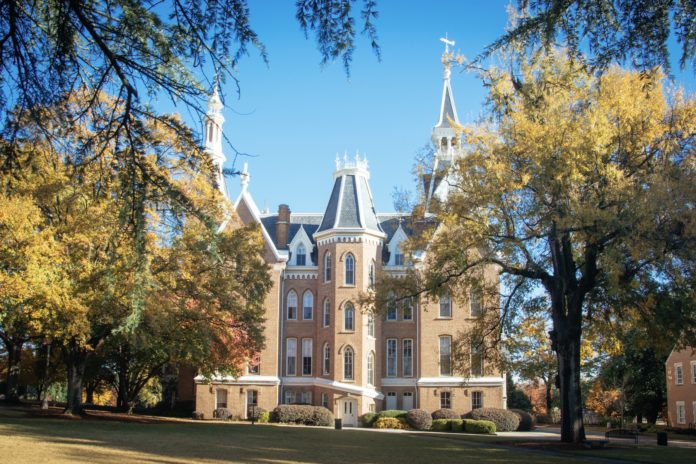An Anglo-American team of archaeologists reports the discovery of the remains of Jamestown, an early colonial settlement on the Caribbean island of Nevis. Newly unearthed evidence may confirm the legend that Jamestown was destroyed when an earthquake and tidal wave struck the island in 1690.
As part of a larger Nevis Heritage Project recording its historical and archaeological resources British professor Roger Leech of the University of Southampton collaborated with American professors Eric Klingelhofer of Mercer and Carter Hudgins of Mary Washington universities to lead the excavation. Funding for the fieldwork came from the three institutions. From July 15 to August 1 the seven-person team explored a coconut grove and riding stable for the site of the settlement, estimated at 200 yards (meters) wide and 400 yards (meters) along the former shoreline. The relative lack of artifacts from the 1700s confirms previous observations made by the BBC TV’s archaeological “Time Team,” whose 1998 attempts to locate the town were frustrated by the fact that a country villa, perhaps owned by a sugar merchant, had occupied the site for much of the 1800s, masking the older town.
The Anglo-American test trenches located wall foundations for three separate building. The remains stand over two feet (0.6 meters) high, and objects from the mid-1600s are associated with their construction. One trench near the former shore line exposed an early wall that was twisted and buckled: the entire wall tilted 5 to 10 degrees on its axis, and half its exposed length had dropped nearly a foot (0.3 meters) towards it broken, seaward end. The archaeologists wonder if this points to a cataclysmic event, the earthquake recorded in 1690. The legend of Jamestown has the town flooded by a tidal wave, one resident escaping to the hills and returning to find that all the buildings and people had disappeared under the sea. Local tradition also holds that one can hear there the sounds of bells tolling and women weeping, a spectral memorial to the tragic loss of life.
Recent archival studies by Southampton PhD student Tessa Machling has shown that Jamestown was probably established around 1660 under the name Morton’s Bay, which was changed to honor the accession of King James II in 1685. Ironically, King James was dethroned a few years later, when William and Mary replaced him in 1690, just months before the earthquake. Jamestown in Virginia was founded in 1607 for his grandfather James I, so the two sites are not identical in date. Yet it is no coincidence that the three archaeologists have participated in recent research projects at the Virginia site, the first permanent English overseas colony and the capital of Virginia until Williamsburg replaced it in 1698. To the team, the two Jamestowns may not be twins, but are sibling sites, sharing a comparable archaeology in the generations that followed Captain John Smith and Pocahontas. In Nevis they have found a range of similar artifacts, from expensive Italian and German imported vessels to kitchen wares produced by African slaves.
Residents on Nevis have shown much interest in the new discoveries. Brought up on the legend had the “lost town” of Jamestown, many are surprised that archaeologists are finding the remains under sand and soil, not under water. John Guilbert, Director of the Nevis Historical and Conservation Society and owner of the riding stables, declared, “As a landowner I felt good about being part of history. The team did an excellent job. It was exciting to see it happen, to keep people informed about Nevis history, not just for those here, but for others around the world.” The Anglo-American team plans to expand their excavation next summer, as part of a field school for teaching historical archaeology in the Caribbean. Because little is known about colonial life in the 1600s, project goals will be to determine the extent of the buried remains, to excavate a complete 17th-century house, and to examine more closely the evidence for the town’s cataclysmic destruction.
One photo accompanies the text. It depicts archaeological work in progress on the site of Jamestown, with a broken and shifted wall foundation in the foreground. The measuring rods are two meters (six feet) long.
###










